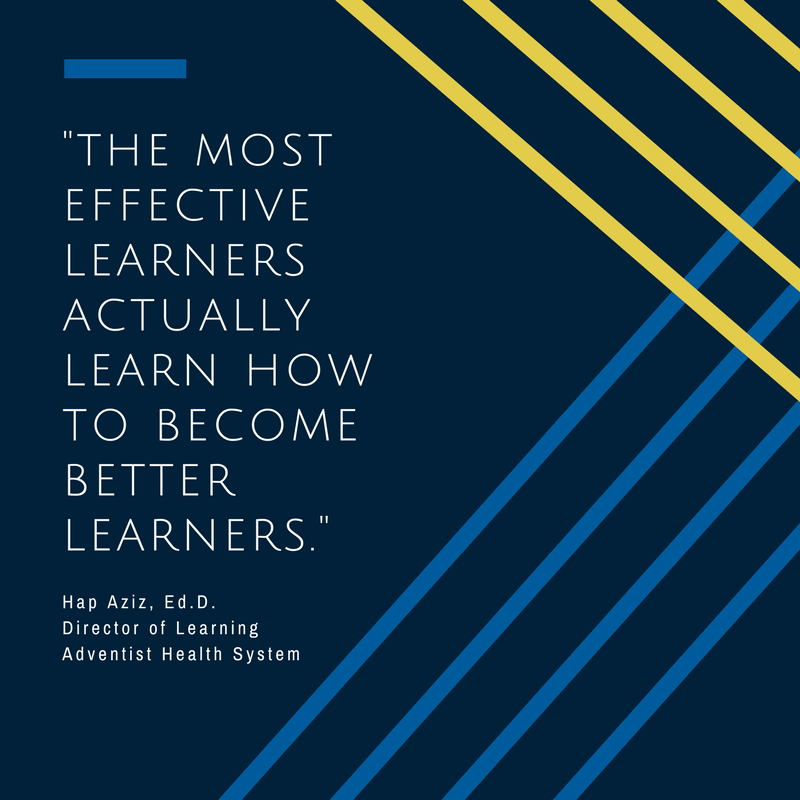More than ever, achieving success in your career requires the ability to learn new skills. Today’s jobs are often very technology dependent, and employers expect you to master tools and techniques that you’ve had little, if any, previous experience with. Are you up to the challenge? If so, these six strategies can help you become a better on-the-job learner. They aren’t necessarily difficult, but they do take consistent practice to lead to success.

1. Have Confidence in Your Ability to Learn New Things
In the mid-1980s, artificial intelligence researcher Marvin Minsky wrote a series of essays entitled The Society of Mind in which he made several observations about the ways people learn. Minsky makes the case that there is actually little difference between the minds of people we consider geniuses and everyone else. The real difference is people’s learning styles. In his essay “Genius,” Minsky writes:
Why do certain people learn so many more and better skills? These all-important differences could begin with early accidents. One child works out clever ways to arrange blocks in rows and stacks; a second child plays at rearranging how it thinks. Everyone can praise the first child’s castles and towers, but no one can see what the second child has done, and one may even get the false impression of a lack of industry. But if the second child persists in seeking better ways to learn, this can lead to silent growth in which some better ways to learn may lead to better ways to learn to learn.
As you approach new topics, have confidence in your ability to learn new things and remember that the most effective learners aren’t necessarily born geniuses; they have learned how to become better learners like you’re doing now.
2. Practice Suspending Your Disbelief
As adult learners, one of the most difficult tasks we face when we’re in new situations is setting aside our pre-conceived notions about the topic at hand. After many years of experience, we all have our own ideas, opinions and biases. To become a better learner, practice a technique you use when consuming entertainment material such as movies and books: suspending your disbelief.
For example, consider how difficult it is to enjoy the latest superhero movie when you’re having an internal argument about the believability of Superman’s ability to fly. If you disbelieve the storyteller, you don’t accept the story.

In the same way, when it comes to learning something, it’s difficult to understand the material from the instructor’s perspective if you keep telling yourself that you already know what’s being taught and you don’t believe how the instructor is teaching you. You can be a much better learner in these situations if you can suspend your disbelief of what the “messenger” is saying long enough to understand and accept the relevant core learning concepts.
3. Use Pattern Matching to Learn Quickly
Pattern matching is about learning how to apply a particular skill across a variety of situations in order to accomplish tasks more efficiently. Drawing blood and administering an IV is an example of this. While they accomplish two different things, the skill of applying a needle in a vein is similar for both activities. Learning one skill actually helps you along the path of learning additional skills.
The key here is to look for patterns in what you’re learning and apply them in as many other activities as you can. Pattern-matching skills are often associated with good organization. From a professional perspective, you’re practicing this skill when you file reports alphabetically, arrange medication on pharmacy shelves, or even group different sized sheets of paper together on your desk.
4. Use the Puzzle Principle to Solve New Problems
Applying the Puzzle Principle is one of the ways that artificially intelligent computer programs solve problems that programmers themselves can’t solve. The idea goes something like this: Suppose the computer is tasked with designing a bridge using a certain number of building materials. As long as it’s also given a set of rules about how the materials can and cannot be assembled, it can use the Puzzle Principle to try different combinations until it finds the one that will result in a functional bridge.
Applying the Puzzle Principle in the context of learning works very similarly. When studying a subject, focus on learning procedural rules rather than step-by-step instructions. Even case studies are most helpful where principles are gleaned and applied broadly.
5. Be Fearless
You’ve probably heard the saying that, “There’s no such thing as a stupid question.” For children, that’s not even a concern, as they have no fear of asking any question (much to the consternation of their teachers and parents). This is part of the reason they learn so much. They also try to apply their newly-gained knowledge in different ways, without worrying if an idea doesn’t work out the way they hoped. They simply remember what happened and then try again with a different approach.

For adult learners though, there is often a fear of appearing to not know something that others already do. This is where you can take a lesson from kids and remember that there is wisdom in the willingness to experiment and ask fearless questions. The experience is worth the effort and there are always lessons to be learned, even when the result is failure.
6. Learn Like You Play
When we are young, play often teaches us motor skills and basic creativity. As we get older, the activity of play can help us acquire skills in critical thinking, logic, and interpersonal relationships. The unfortunate truth of many of our formal learning environments is that play is often considered lacking in seriousness and as a result, lacking in value when it comes to education. The good news is that even if your on-the-job learning activities don’t incorporate elements of play, you can approach them with as much enthusiasm as would a child hoping to go outside to play. 
Here are some other ways you can apply this strategy:
- Look for pieces of your learning experience that interest you on a personal level.
- Find ways of applying the content you learned in ways that engage your curiosity or contribute to your enjoyment of the material on a personal level.
- Challenge yourself whenever possible by setting up learning goals and rewards for successfully achieving them.
- Don’t be afraid to jump into collaborative or competitive situations.
- Most of all, don’t hesitate to push yourself the way you might have done as a child learning a new skill.
Take Advantage of Every Learning Opportunity

Remember that since we all learn differently, these are only a few of the ways that you can solve problems, master new skills, and become a better on-the-job learner. The key to your continued success is to take advantage of every learning opportunity. Ultimately, great educational experiences depend just as much on the learner as the instructor. If you take responsibility for your part and equip your mind for success, you can rise to any learning challenge.



